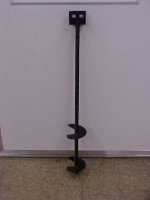James Pop
New member
Hey guys,
I see some threads concerning fall protection but none seem to provide what I think is an obvious answer. Would it be simple to drive a 2 or 3 foot stake in the ground on the opposite side of the house to tie off. Or, tie off to stationary object? I would think HOs would like that better then nailing into the structure. While checking out threads I saw a vid of a guy tying off on the rim of a car. Surely, that is not a good idea. Thanks.
James
I see some threads concerning fall protection but none seem to provide what I think is an obvious answer. Would it be simple to drive a 2 or 3 foot stake in the ground on the opposite side of the house to tie off. Or, tie off to stationary object? I would think HOs would like that better then nailing into the structure. While checking out threads I saw a vid of a guy tying off on the rim of a car. Surely, that is not a good idea. Thanks.
James


